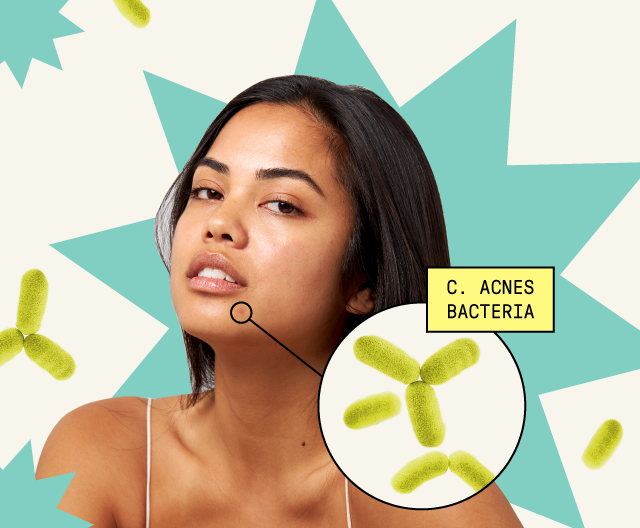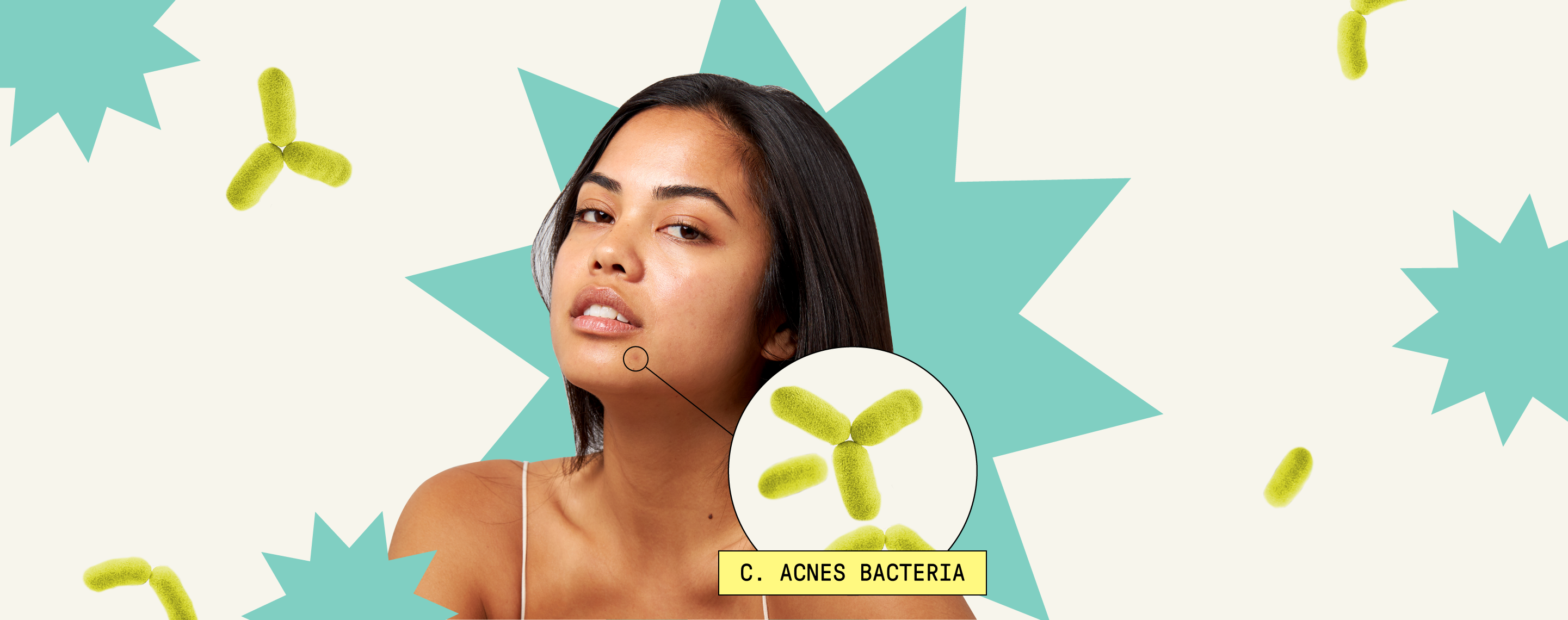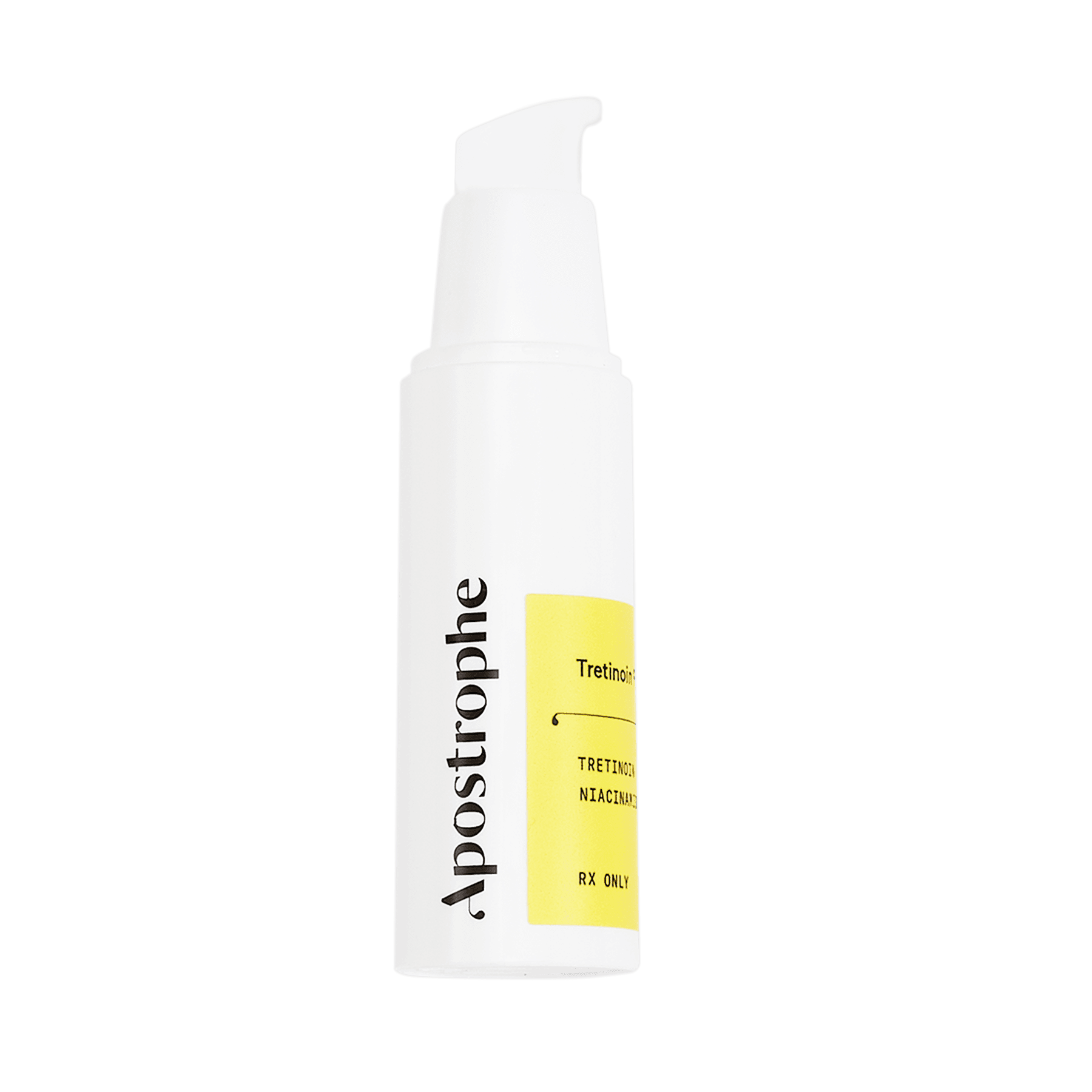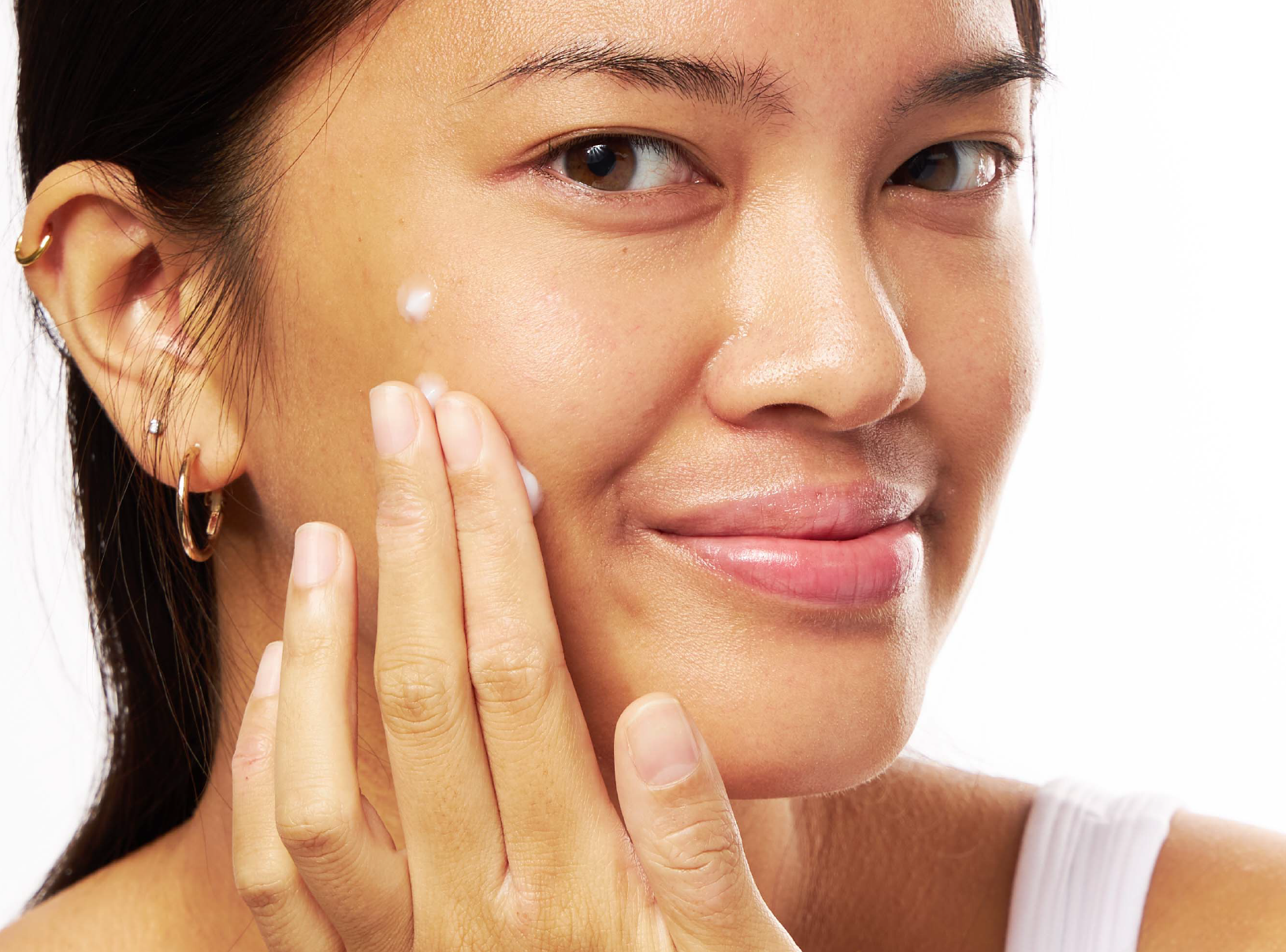Deep Dives
A Complete Guide to Using Tretinoin for Acne


SHARE
Deep Dives
A Complete Guide to Using Tretinoin for Acne
Medically reviewed by Aimee Paik, MD
Written by Apostrophe Team
Last updated 11/1/2024
Tretinoin, or all-trans retinoic acid, is a topical skin medication that’s used to treat acne, wrinkles and other common skin issues.
If you suffer from acne, you may have looked into using tretinoin to manage your symptoms and stop breakouts from affecting your skin.
Currently, tretinoin is one of the most effective treatment options available for managing and preventing acne.
You can access tretinoin in cream or gel form, or as an active ingredient in prescription skin care products such as Apostrophe Customized Acne Cream.
However, like other acne treatments, tretinoin isn’t perfect, nor are its results immediate.
It often takes several months to start working and can cause a range of side effects, particularly during the first few months of use.
Below, we’ve explained what tretinoin is, as well as how you can use it to treat acne breakouts and prevent whiteheads, blackheads, pimples and other forms of acne from coming back.
We’ve also answered several common questions about using tretinoin as a treatment for acne, from questions about the common tretinoin “purge” to common worries about tretinoin’s safety, side effects, interactions and more.
What is Tretinoin?
Tretinoin is a topical retinoid that’s derived from vitamin A.
Research shows that tretinoin is one of the most effective medications available for removing existing acne and preventing acne from returning.
In a scientific review published in the journal Dermatology and Therapy, researchers described tretinoin and other retinoids as the “mainstay” of therapy for acne.
Tretinoin is a prescription medication that’s available as a gel, cream or as an active ingredient in other acne treatments.
It’s available in a variety of strengths and is designed to be applied to affected areas of skin.
In the United States, topical tretinoin is generally sold in drug stores and pharmacies under the brand name Retin-A®.
It’s also available under a variety of different brand names as a generic medication.
What Are The Benefits of Tretinoin?
Tretinoin offers several benefits as a skin care medication, including the ability to clear up acne breakouts and improve the texture of your skin. Common benefits of tretinoin include:
Removal of acne lesions. Tretinoin is FDA approved as a treatment for acne vulgaris, a common form of acne. While results aren’t immediate, it can often clear up even the toughest of acne breakouts.
Prevention of acne breakouts. When it’s used as a long-term treatment, tretinoin helps to control acne breakouts and prevent them from coming back.
Lighter, less visible fine lines and wrinkles. Although its best known as a medication for treating acne, tretinoin also has anti-aging effects. In fact, research shows that it can make fine lines and wrinkles that often develop with age lighter and less visible.
Clearer, smoother skin. By treating acne, lightening wrinkles and stripping away other skin imperfections, tretinoin can improve your skin’s texture and give it a smoother, less rough feel.
Improvements in skin discoloration. Tretinoin is also FDA approved as a treatment for hyperpigmentation -- an aging-related condition that can cause certain areas of your skin to become darker than others (for example, age spots).
How Does Tretinoin Work as an Acne Treatment?
Tretinoin has several effects on your skin, each of which plays a unique role in preventing acne and improving your skin’s general appearance.
To understand how tretinoin works, it’s important to also understand the basics of how and why acne breakouts develop in the first place.
Small acne lesions, such as whiteheads and blackheads, develop when the hair follicles in your skin become clogged due to a mix of sebum and dead skin cells.
Sebum is a type of oil that’s produced by your sebaceous glands. It plays a key role in sealing in moisture and shielding your skin from damage.
However, when your sebaceous glands secrete too much sebum, it can build up inside your hair follicles and contribute to blockages.
In order to reverse the effects of sun exposure, wind and friction, your skin constantly maintains itself through a process called epidermal turnover.
As part of this process, new skin cells produced in the basal layer of your epidermis travel to the top layer of your skin to replace old ones.
These old, dead skin cells detach from your body and eventually shed into the environment.
On average, the epidermal turnover process takes 40 to 56 days. When the dead skin cells that are shed during this process build up on the surface layer of your skin, they can mix with sebum and form plugs that clog your hair follicles and create acne.
Whiteheads and blackheads are mild forms of acne. When bacteria becomes trapped inside an acne lesion, it can cause inflammation and lead to more severe forms of acne such as papules, pustules and, in some cases, nodular or cystic acne.
Although the precise mechanism by which tretinoin functions isn’t well understood, researchers are aware of several ways that tretinoin combats the development of acne.
First, tretinoin speeds up the epidermal turnover process, meaning dead skin cells are replaced by new, living ones in less time than normal.
Second, tretinoin makes cornified skin cells, or dead skin cells, detach from your skin and shed into the environment. This helps to reduce the buildup of dead skin cells that can contribute to acne breakouts.
Third, tretinoin reduces the size of the hair follicles in your skin, which may help to prevent your sebaceous glands from secreting excessive amounts of sebum.
Although it isn’t directly related to acne, research has also found that tretinoin can stimulate the production of collagen, which may help to treat skin aging and acne scarring.
Because of these effects, tretinoin can clear up skin that’s affected by acne and, in many cases, prevent acne breakouts from occurring again in the future.
Does Tretinoin Really Get Rid of Acne?
Simply put, yes. Numerous studies have found that tretinoin is one of the most effective topical medications available for getting rid of acne lesions and preventing them from coming back.
In a 2009 study, participants were either given tretinoin gel or a non-therapeutic gel to apply to their face.
Over a period of 12 weeks, the people who used the tretinoin gel experienced large reductions in acne -- significantly larger than the participants given a non-therapeutic alternative.
A more recent study published in 2013 found that more than 50 percent of people experienced improvements in acne from tretinoin, even when it was applied for only 30 minutes per day.
Finally, a systematic review published in the American Journal of Clinical Dermatology looked at more than 54 studies of tretinoin and other topical retinoids as treatments for acne.
The researchers concluded that topical retinoids like tretinoin are effective at treating acne, and that they’re most effective when used in combination with benzoyl peroxide.
In addition to clinical studies, there are also thousands of anecdotal reports online from people with acne who’ve successfully used tretinoin to prevent breakouts and improve their skin.
Communities like Reddit’s “Skincare Addiction” feature hundreds of before and after albums of tretinoin users, often comparing results over the course of two months, six months or one year of tretinoin use.
Put simply, both scientific research and thousands of anecdotal reports have reached the same finding -- that tretinoin works extremely well at reducing outbreaks of acne in the short term and over the long term.
While tretinoin is effective, it’s important to understand that results are rarely immediate. It’s also important to be aware that while tretinoin produces improvements in the long term, some people find that their acne actually gets worse during the first few months of treatment.
This is known as the “tretinoin purge,” and it’s a common side effect of tretinoin and other topical retinoids.
We’ve talked about the purge, as well as other common side effects of tretinoin, in greater detail a little further down the page.
Topical Tretinoin Strengths
Topical tretinoin gel, cream and solution comes in several different strengths, ranging from .01% up to .10%.
In the United States, skin care products and medications that contain tretinoin are only available with a prescription. This includes low-strength tretinoin products.
In some countries, lower strength versions of tretinoin cream, gel and solution are available over the counter.
Although lower-strength tretinoin creams and other products are shown to treat acne and aging in most studies, research generally shows that stronger tretinoin products are more effective.
However, the majority of research into tretinoin also shows that side effects are more common in people who use higher-concentration tretinoin products, such as .05% or 1% tretinoin.
Your healthcare provider will recommend the most appropriate tretinoin strength for you. If you have mild to moderate acne, this may mean a .05% tretinoin cream.
Depending on your reaction to tretinoin, you may need to adjust the change of your medication or adjust your usage habits over time.
How Long Does Tretinoin Take to Work?
Tretinoin starts working as soon as it’s absorbed by your skin. However, this doesn’t mean that you’ll notice improvements in your acne right away.
Like other acne medications, tretinoin needs time to have a noticeable impact on acne. For the most part, scientific research shows that it typically starts to produce improvements after about 12 weeks (approximately three months).
In one study from 2009, people with acne who used a .05% or .1% tretinoin cream experienced a significant decrease in visible acne lesions after 12 weeks of treatment.
Interestingly, although the .1% cream contained twice as much tretinoin, it was only 12 percent more effective at reducing acne.
However, the stronger tretinoin cream was significantly more likely to cause side effects.
In another study, patients given a combination of tretinoin cream and clindamycin 1% gel saw a reduction in facial acne lesions from an average of 13.70 ± 4.80 to 1.30 ± 2.95 after 12 weeks of treatment.
Although a mild improvement was visible after four and eight weeks, the combined tretinoin and clindamycin treatment produced the biggest improvements after 12 weeks.
It’s important to understand that 12 weeks is a general timeline for the results of tretinoin use to become visible.
Many tretinoin users experience improvements sooner, while others may need to wait for slightly longer than 12 weeks for optimal results.
However, the findings of these studies suggest that the 12-week point is a good time to assess your results from tretinoin to see if it’s working for you.
Several different factors may affect the amount of time it takes for tretinoin to clear acne lesions and improve your skin:
The severity of your acne. If you have very severe acne, it may take longer before your skin clears after you start using tretinoin.
The strength of the tretinoin cream. Most research suggests that creams containing a higher percentage of tretinoin (for example, 0.1% instead of .05%) are more effective at treating acne than milder preparations. However, there doesn’t appear to be a linear relationship between the concentration of a tretinoin product and its effectiveness as an acne treatment and higher concentrations can cause more irritation.
How consistently you apply the medication. Tretinoin works best when it’s applied to your skin consistently. If you forget to use your medication or skip certain days, you may need to wait for longer to see improvements.
How sensitive your skin is to the effects of tretinoin. Some people experience faster results from tretinoin than others. Since no two cases of acne are identical, your results may take more or less time than the typical results timeline seen in studies.
Your use of other skin care products. Other skin care products, such as moisturizer or topical antibiotics, may enhance the results of tretinoin or affect its ability to be absorbed by your skin. These skin care products may cause you to experience faster or slower results while you use tretinoin. Make sure to inform your healthcare provider about any other medications or skin care products you use before you start treatment with tretinoin.
Your Acne Might Get Worse Before it Gets Better
As we mentioned above, tretinoin may cause your acne to become more severe before it begins to clear up.
This is referred to as the “tretinoin purge,” and it’s an infamous side effect of tretinoin that you’ll want to understand before you use this medication to treat your acne breakouts.
During the first few months of using tretinoin, some people experience an increase in their level of facial acne.
This may be linked to tretinoin’s effects on epidermal turnover.
Research has found that up to 20 percent of people who use tretinoin experience the “purge” or “acne flaring” effects.
During this period, your acne may become more severe. You might notice more pimples forming on your skin than normal, or that your existing acne lesions seem to become more inflamed and painful than they were before you started using medication.
In some cases, you may also experience side effects of tretinoin, such as dryness, skin peeling and flaking. We’ve discussed these in more detail in the sections below.
Not everyone experiences the tretinoin purge, but for those who do, it can often be a particularly unpleasant few weeks.
Like with many things in life, the key to passing through the tretinoin purge successfully is a mix of patience and determination.
The tretinoin purge is almost always a temporary issue that will resolve on its own as your skin becomes more accustomed to the tretinoin cream or gel.
You can get through it by focusing on the long term and thinking about how your skin will look once the medication starts working.
If you experience an increase in acne severity that lasts for longer than 12 weeks, it’s important to talk to your healthcare provider.
They may suggest applying tretinoin less frequently or switching to a lower concentration cream to reduce the severity of your symptoms.
Can Tretinoin Cause Side Effects?
Although tretinoin is a safe and effective medication when it’s used as prescribed, it can cause a range of side effects.
Most of the side effects of tretinoin are mild and transient, meaning they’ll gradually go away as your skin adjusts to the effects of the medication.
However, in some cases, tretinoin may cause more severe side effects that require treatment and attention.
Common side effects of tretinoin include:
Red, irritated and scaling skin
Warmth or a stinging/burning sensation that affects your skin
Dryness, peeling, redness or flaky skin
Lightening or darkening of your skin
An increase in acne lesions
Swelling, blistering or crusting of your skin
Although uncommon, tretinoin may cause more severe side effects, such as itching, hives and pain or discomfort.
If you experience any of these side effects during treatment with tretinoin, it’s important to talk to your healthcare provider immediately.
Our guide to tretinoin offers more information on the side effects listed above, as well as the steps that you can take to manage them.
Overall, severe side effects from tretinoin are rare. In the event that they do occur, they almost always stop when you adjust your dosage or stop using the medication.
Is Tretinoin Safe?
Although tretinoin can cause side effects, it’s a safe, effective medication that’s used by millions of men worldwide without major issues.
Tretinoin has been approved by the FDA as a treatment for acne since the late 1970s.
During the last three decades, it also received approval by the FDA as a topical treatment for wrinkles and other common signs of skin aging.
With this said, there are a few things that you should be aware of if you’d like to use tretinoin to treat acne or for its anti-aging effects.
The first is that tretinoin may cause complications if you have certain skin conditions, including atopic dermatitis (eczema).
If you have a skin condition or disease, it’s important that you inform your healthcare provider before using tretinoin.
The second is that tretinoin should only be used on healthy, uninjured skin. If you’re sunburned or have a skin injury, you should wait for your skin to heal before using tretinoin.
Since tretinoin is only available with a prescription, you’ll always have an opportunity to discuss these issues with a licensed healthcare provider before you start using this medication.
How to Use Tretinoin to Remove Acne and Improve Your Skin
Tretinoin is a very easy medication to use. Since it’s sold as a cream or gel, there’s no need to worry about swallowing tablets, capsules or oral medication in order to treat acne and improve your skin.
To use tretinoin, closely follow the instructions provided with your meditation or by your licensed healthcare provider.
Before you apply tretinoin cream or gel, make sure that your face is completely clean.
To wash away sweat, dirt and other substances, carefully wash your face with warm and a mild soap or facial cleanser. After washing, gently pat your skin dry using a clean towel.
There’s no need to scrub your face before applying tretinoin. Simply washing your face is more than enough to remove dirt and bacteria.
Make sure your skin is completely dry after washing your face to reduce the risk of skin irritation.
Apply a small amount of tretinoin to the areas of your face affected by acne. If you’re also using tretinoin for anti-aging purposes, you may want to focus on areas with visible fine lines, wrinkles or skin discoloration.
If you have a liquid solution form of tretinoin, use a cotton swab or gauze bandage to apply it to your face.
There’s no need to use a large amount of tretinoin. For most people, a pea-sized amount of the cream or gel should be enough to cover the affected areas of your face.
Once you’ve successfully applied the medicine, dispose of any cotton swabs or gauze pads and thoroughly wash your hands to remove any tretinoin from your fingers.
You should always apply a moisturizer either immediately before or after applying tretinoin to reduce the risk of skin irritation.
Tretinoin Works Best as a Long-Term Treatment
The first few weeks of using tretinoin can be tough. Not only is there often little to no noticeable improvement in your acne during the first few weeks, but for many people, tretinoin only seems to make things worse.
Once the initial tretinoin "purge" subsides, your skin will generally improve relatively quickly and clear up over the course of several weeks.
That's mainly because tretinoin is intended as a long-term treatment for acne. Most healthcare providers that prescribe tretinoin recommend using it continually over the long term.
It’s important to remember that as well as removing acne in the short term, tretinoin also works proactively to stop it from coming back.
During your first few weeks of using tretinoin, try not to expect instant results or spend too much time worrying about perceived improvements.
Instead, think about the long term and try to avoid assessing your results for at least 12 weeks.
You’ll have the best experience by focusing on how you’ll look a year from now. Tretinoin really does work, but it requires patience and a long-term focus.
Thinking long term will also make it easier to accurately track your results and stay focused on making real progress with your skin.
Using Tretinoin for Acne
Used as prescribed, tretinoin is a powerful medication that can clear up even the most stubborn acne and transform your skin.
Although tretinoin requires some patience, it’s an effective treatment for acne. It also offers real anti-aging effects that can make it an appealing two-in-one medication if you get acne and also want to give your skin a smoother, more youthful appearance.
If you’d like to start using tretinoin, you’ll find it as an active ingredient in Apostrophe Customized Acne Cream, which is available after an online consultation with a licensed healthcare provider.
We also offer access to a range of other skin care treatments, including a derm-approved sunscreen and body acne products.
Shop this post

Tretinoin
Like what you just read? Sign up for our email list to get the scoop on skincare science delivered straight to your inbox.

Deep Dives
A dermatologist shares his thoughts on the recent studies about benzoyl peroxide and benzene.
Read More
Education
What is milia?
What is milia? Today, we’re jumping into one type of bump that you may have heard about most commonly in infants — milia.
Read More
Education
Best moisturizer for acne-prone skin
If you have combination acne-prone skin, figuring out which moisturizer is best for your skin might be tough. In this guide, we break down the best moisturizer for combination, acne-prone skin.
Read More
